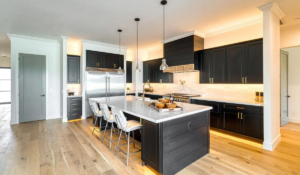Mastering Real Estate Photography: Combining HDR and Flash Techniques

Introduction:
Real estate photography requires a combination of art and technology. Photographers must capture the properties in their most flattering light, while still maintaining accuracy and transparency. This guide will show you how to take real estate pictures using HDR (High-Dynamic-Range) and flash, from beginning to end. Understanding the pros and cons of each technique and mastering them both will allow photographers to achieve professional results that showcase properties.
Ethics:
It’s important to first address the ethical issues surrounding real estate photography. Transparency and accuracy are key. Altering structural elements and misrepresenting property crosses ethical boundaries. Photographers have a duty to accurately represent properties they photograph, while also enhancing their aesthetic appeal.
Exterior shots and Walkthrough

Start by walking through the property and observing its lighting. Use drones to capture exterior shots at different angles. Exterior shots set the scene for interior photography.
Gear and Setting:
Any modern DSLR or Mirrorless camera with RAW capability will do. RAW files allow for more flexibility in post-processing. Use Auto White Balance with a moderate ISO setting (between 250 and 600) when taking interior photos. Wide-angle lenses can help you capture the entire room.
Interior Setup
Position the camera in a strategic way to capture the most interesting aspects of the room. Make sure the camera is at a level for flat, straight and balanced photos. Use wide-angle lenses in order to show the size and layout of a room.
Bracketing HDR:
You can use exposure bracketing for multiple shots taken at different exposures to ensure adequate coverage of the dynamic range. For optimal results, aim for three frames that are two stops apart. For efficiency, activate the exposure bracketing function in your camera’s settings.
Develop HDR photos:
To create HDR photos, merge bracketed exposures with software such as Lightroom. For optimal results, adjust settings such as Auto Align or Auto Settings. HDR processing balances exposure and improves image quality.
Add Flash to HDR
Flash can be used to balance the light and fill in shadows. To achieve even lighting, experiment with placement of flashes and diffusion techniques. It is important to take test shots before you can fine-tune the flash intensity and position.
Combining HDR with Flash in post-processing:

In post-processing, blend HDR images with flash images to produce a more natural-looking image. Masking techniques can be used to selectively apply ambient or flash lighting for a balanced outcome. Adjust the color, contrast and vertical alignment to complete the image.
Challenging Lighting Conditions:
Real estate photography is often a challenging task, as the lighting conditions are difficult to capture with a single exposure.
HDR Technique:
HDR photography is the process of capturing multiple images at different exposure levels, and then merging them together in post-processing in order to reveal detail in both highlights as well as shadows.
HDR has many advantages:
- Additional equipment is minimal
- Automated merging software simplifies post-processing
- The camera allows for quick shooting of interior and exterior images
HDR has its own disadvantages:
- Ambient light is a major factor.
- Some shadow areas will not look as good with additional lighting
Flash Technique:
Flash can be used to highlight specific areas in real estate photography.
Benefits of Flash
- Flexible control and direction of light
- With sufficient lighting, you can capture an entire scene with a single shot.
Flash has its disadvantages:
- Additional equipment and setup required
- Multiple exposures may require extensive post-processing.
Combining Techniques:
Real estate photographers can achieve the best results by mastering HDR and flash photography.
Conclusion:
Understanding the pros and cons of HDR and Flash techniques will help photographers choose the best approach for each specific shoot. To improve your skills and achieve professional results in real estate photographs, you need to practice and experiment continuously. When showcasing properties, always prioritize accuracy, transparency and visual integrity.


